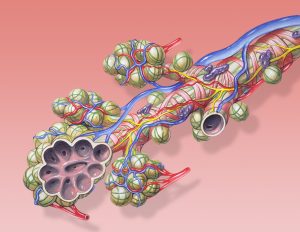Imagine you have been allergic to something for most of your life. But now you’re told that it may not be true. Do you trust it? Recent studies show that there is a substantial number of patients incorrectly labelled as having an allergy to penicillin. Some even call this unverified allergy an epidemic. An estimated 32 million people in the United States are documented to be allergic to penicillin. That would mean that 1 out of 10 people reading this are allergic. Yet, over 90% of these patients are not actually allergic to penicillin.
Penicillin is one of the oldest antibiotics for bacterial infections. Alternatives to this drug raise concerns as they are less effective, more expensive and sometimes more toxic. Therefore, doctors only choose to prescribe alternatives when options are limited.

Penicillin is often termed the wonder drug for it’s ability to fight infections. Source: Flickr Commons
If a patient is labelled with an allergy to penicillin, doctors, with good reason, choose to err on the side of caution and prescribe an alternative medication to fight the infection. A misdiagnosis may occur when symptoms are thought to appear when penicillin was taken, i.e. when penicillin is prescribed to a sick child. If a viral infection is mistaken for a bacterial one then the symptom that is developed from the virus may be attributed to the drug instead. Thus incorrectly concluding the child is allergic.
A skin test is the definitive tool to determine if an allergy exists. The procedure involves pricking the skin and observing the reaction. Doctors can then determine if the patient is actually allergic to the drug in question.

Allergy skin test. See how allergies are identified by the appearance of red and inflamed areas. Source: Wikimedia Commons
A study published in 2017 created an approach for testing and challenging the penicillin allergy label. Patients who were admitted to the hospital underwent an investigation of their allergy history with a pharmacist. Then, if appropriate, the patient would undergo a penicillin skin test. If the test was negative, the allergy would be challenged and the patient would be given a penicillin-like drug. Results showed that one-third of the patients were switched to penicillin successfully leading to less days spent in the hospital and lower hospital bills.
Another paper developed a similar way to evaluate reported penicillin allergies. First, the history of the allergy is researched to determine the risk. Those with mild symptoms would be low-risk while those that develop breathing problems would be moderate to high-risk. Low-risk patients would be given a course of a penicillin-like drug and observed for symptoms of a reaction. Moderate-risk patients would first undergo a penicillin skin test and then given a round of the drug if the skin test was negative. High-risk patients were not challenged and referred to a specialist. Those who tolerated the drug administration then had the allergy removed from their health records.
Both papers emphasize the necessity that penicillin allergy testing become part of the admission process to a hospital. This test saves money and reduces the chance for patients to get further infections from less effective drugs. Plans for allocating funds in hospitals may need to incorporate this information to better treat patients in the future.
- Katie Donohoe


